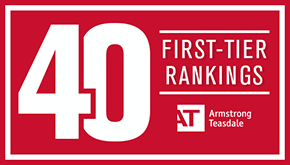Tenth Circuit Bankruptcy Appellate Panel Determines Creditor’s Right to Post-Dismissal Garnishment of Chapter 13 Trustee
Debtors in Chapter 13 bankruptcy cases frequently begin making plan payments to the Chapter 13 trustee before a plan is confirmed. The trustee holds the funds until confirmation, at which time the funds are distributed to creditors per the plan terms. But what happens to those funds if the case is dismissed prior to confirmation? On April 27, 2021, in an opinion written by Bankruptcy Judge Michael E. Romero, the United States Bankruptcy Appellate Panel of the Tenth Circuit (BAP), in Bednar v Bednar (In re Bednar) Case No. WO-20-041 & WO-20-042 (B.A.P. 10th Cir. 2020), reversed and remanded a decision made by the United States Bankruptcy Court for the Western District of Oklahoma (Bankruptcy Court) with regard to this question.
A foreclosure action in Oklahoma County District Court (Oklahoma Court) against Alexander Bednar was stayed due to Bednar filing for relief under Chapter 13 of the United States Bankruptcy Code. In re Bednar (Case No. 19-41366) was filed on Oct. 1, 2019, in the Western District of Oklahoma.
Oklahoma County Court Clerk Rick Warren and Deputy Courtroom Clerk Jennifer Byler entered their appearance in the bankruptcy case as creditors by virtue of four sanction judgments against Bednar totaling $31,582.50. For several months, Bednar attempted to file a confirmable Chapter 13 plan. Ultimately, he failed, and the Bankruptcy Court denied confirmation and dismissed the case on June 24, 2020. At the time of dismissal, the Trustee had received $30,838.92 in plan payments. Warren and Byler filed a motion with the Bankruptcy Court seeking leave to garnish those funds. Bednar’s ex-wife followed suit, filing her own motion for leave to garnish for domestic support obligations. The Trustee responded to the motions and a hearing was held. The Bankruptcy Court entered an order denying both motions.
In denying the creditors’ request, the Bankruptcy Court evaluated the motions in light of the Barton doctrine as well as 11 U.S.C. §1326(a)(2). It concluded that the inconvenience the garnishments would impose on the Trustee did not fall within an exception to the Barton doctrine. Both creditors filed notices of appeal on Sept. 15, 2020, to the BAP.
The Barton doctrine, derived from Barton v. Barbour, 104 U.S. 126 (1881), “requires before suit can be brought against bankruptcy trustees or their counsel for acts taken in their official capacities during a bankruptcy case, the plaintiff must first seek leave of the overseeing bankruptcy court.” In the Tenth Circuit, the doctrine exists to ensure other courts do not intervene in the Bankruptcy Court’s administration of an estate without permission. Satterfield v. Malloy, 700 F.3d 12313, 1237 (10th Cir. 2012).
The BAP agreed with the Bankruptcy Court that Barton applies, and accordingly, that the creditors must seek the bankruptcy court’s permission prior to executing a garnishment. However, Judge Romero stated that it “abused its discretion by denying Barton leave based upon unsupported allegations of potential inconvenience to the Trustee without weighing the other important factors bearing upon such a decision.” He based this decision on prior cases, such as In re Kashani, 190 B.R. 875, 886-87 (9th Cir. BAP 1995) and In re VistaCare Grp., LLC, 678 F.3d 218, 232-33 (3d Cir. 2012), where the Courts enumerated various factors to be considered in deciding whether to grant Barton leave. It appears that the Bankruptcy Court ignored all of these factors and denied leave solely on the Trustee’s alleged inconvenience.
11 U.S.C. §1326(a)(2) provides that “a payment made… shall be retained by the trustee until confirmation or denial of confirmation. If a plan is confirmed, the trustee shall distribute any such payment in accordance with the plan as soon as is practicable. If a plan is not confirmed, the trustee shall return any such payments not previously paid and not yet due and owing to creditors… to debtor, after deducting any unpaid claim allowed under section 503(b).”
Case law surrounding 1326(a)(2) is split between two interpretations. The first is the plain meaning approach which concludes that the trustee will return all funds directly to the debtor. The second is a “debtor-of-the-debtor” analysis that argues that once the case is dismissed, the trustee is simply holding assets of the debtor, similar to a bank. The trustee no longer has any obligation to, or control over, the bankruptcy estate. Following that analysis, there is nothing stopping a creditor from garnishing those funds.
Judge Romero agreed with the second approach stating that, by garnishing the funds from the Trustee, “the Trustee would in fact be returning the property to the debtor, not in the form of a cash payment, but in the form of a debt reduction.” He went on to state that “the transfer may not be to the debtor, but it is nevertheless made for the debtor’s benefit.”
It can be difficult for creditors to collect debt once a debtor seeks bankruptcy protection. However, the Barton doctrine does allow parties to seek permission from the bankruptcy court to proceed with garnishment against debtor funds after dismissal. It is always recommended to seek legal advice before attempting to collect debts against bankruptcy debtors so as not to unintentionally violate Bankruptcy Code provisions.

































